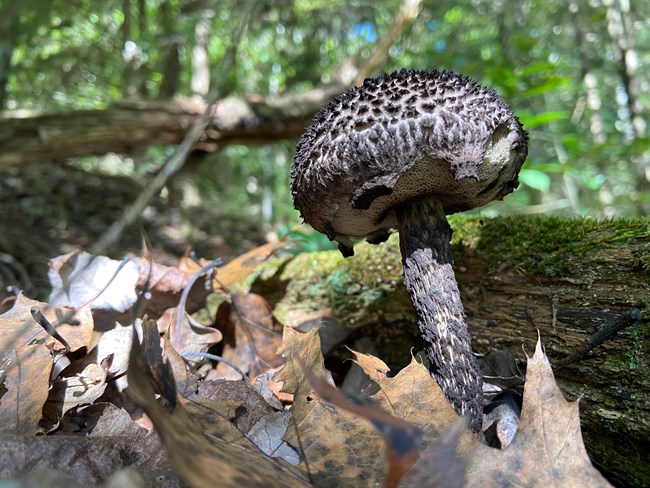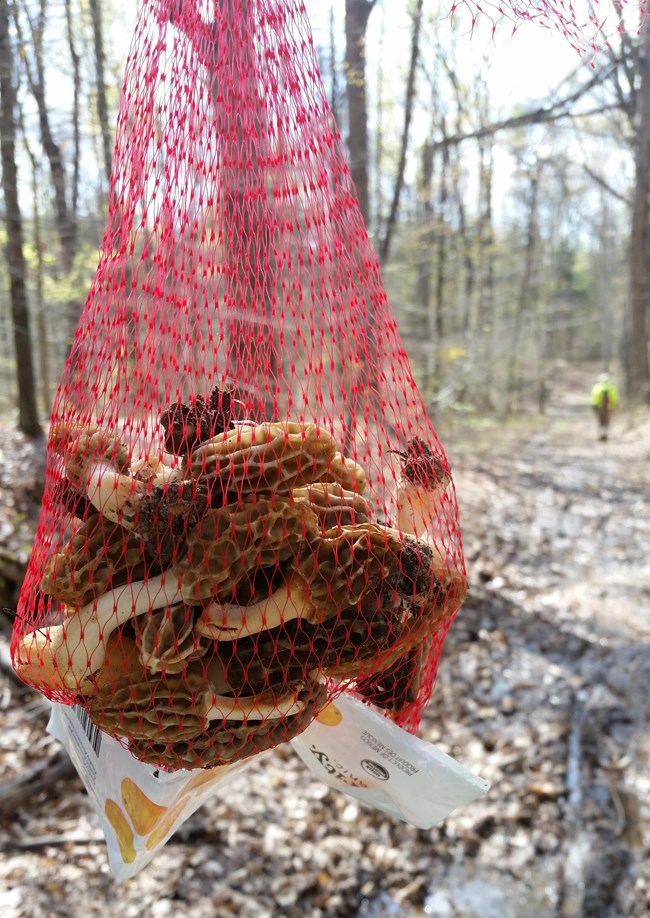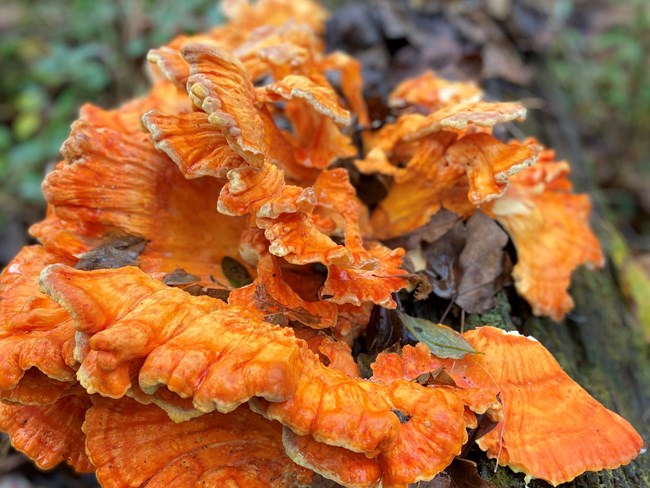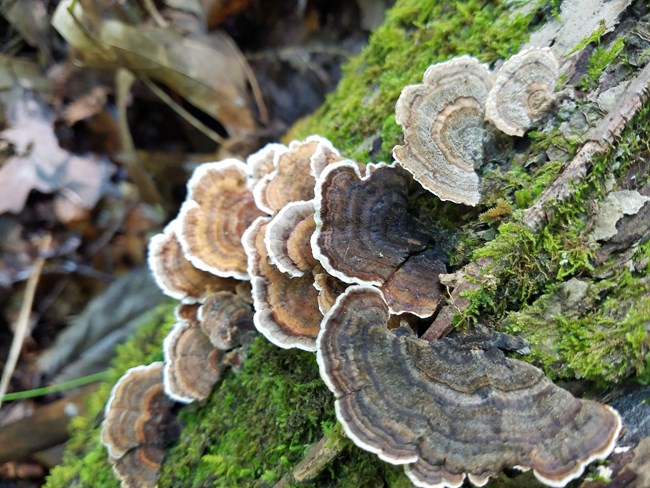
NPS Photo/ Alexa Harmon Mammoth Cave National Park supports over 200 species of fungi. A great abundance of these species are seen in Spring and late Fall, but careful observation at any time of year will reveal a wide diversity of fungus on dead wood, leaf litter, and many other places within the park. Fungi's Role in the Food WebIt may be a surprise to learn that fungi are not plants. They do not have chlorophyll (the pigment needed for photosynthesis), fungi cannot capture sunlight and manufacture the carbon compounds needed for survival, instead they draw their energy from where they grow. Mushrooms are commonly found clumped on dead trees, consuming downed rotten wood, or growing out of animal dung. They slowly decompose this material and return nutrients to the soil for other plants to use. Without mushrooms and other fungi, the forest would take considerably longer to decompose and regenerate. 
NPS Photo/ Kelli Tolleson Gathering MushroomsThe information provided on this website is not intended to serve as an identification guide, but rather as a resource for those who are curious about fungi they encounter in the park. Some species of mushrooms are edible, but many contain toxins: some can be irritants to the skin and others are deadly if ingested. It is extremely difficult for anyone but an expert to identify the difference between edible and inedible mushrooms. If you are not 100% certain you have identified a mushroom correctly, do not collect it! 
NPS Photo/ Alexa Harmon Interesting Species Found in the ParkLaetiporus sulphureus is a species of bracket fungus (fungus that grow on trees) found throughout the world. Its common names are crab-of-the-woods, sulphur shelf, and chicken-of-the-woods. Its fruit bodies grow as striking golden-yellow shelf-like structures on tree trunks and branches. Unlike many bracket fungi, it is edible when young, although adverse reactions have been reported. 
NPS Photo Trametes versicolor is a common polypore mushroom found throughout the world. Meaning 'of several colors', versicolor reliably describes this fungus that displays different colors. For example, because its shape and multiple colors are like those of a wild turkey, T. versicolor is commonly called turkey tail. This species is nonedible. |
Last updated: November 24, 2021
